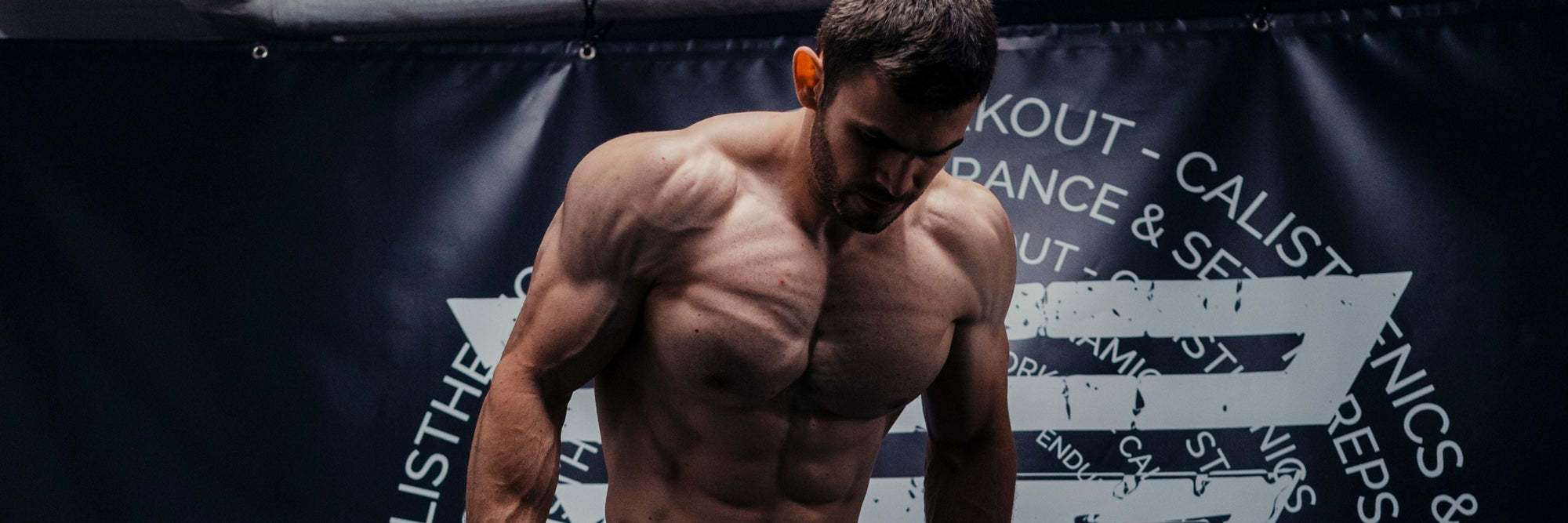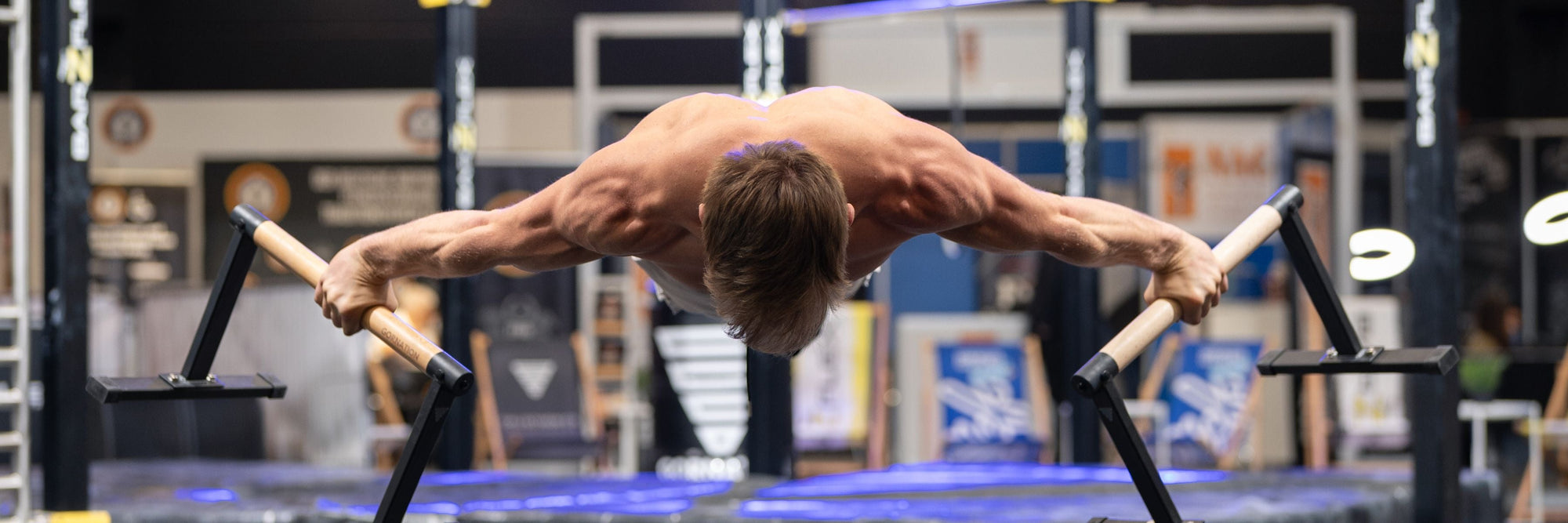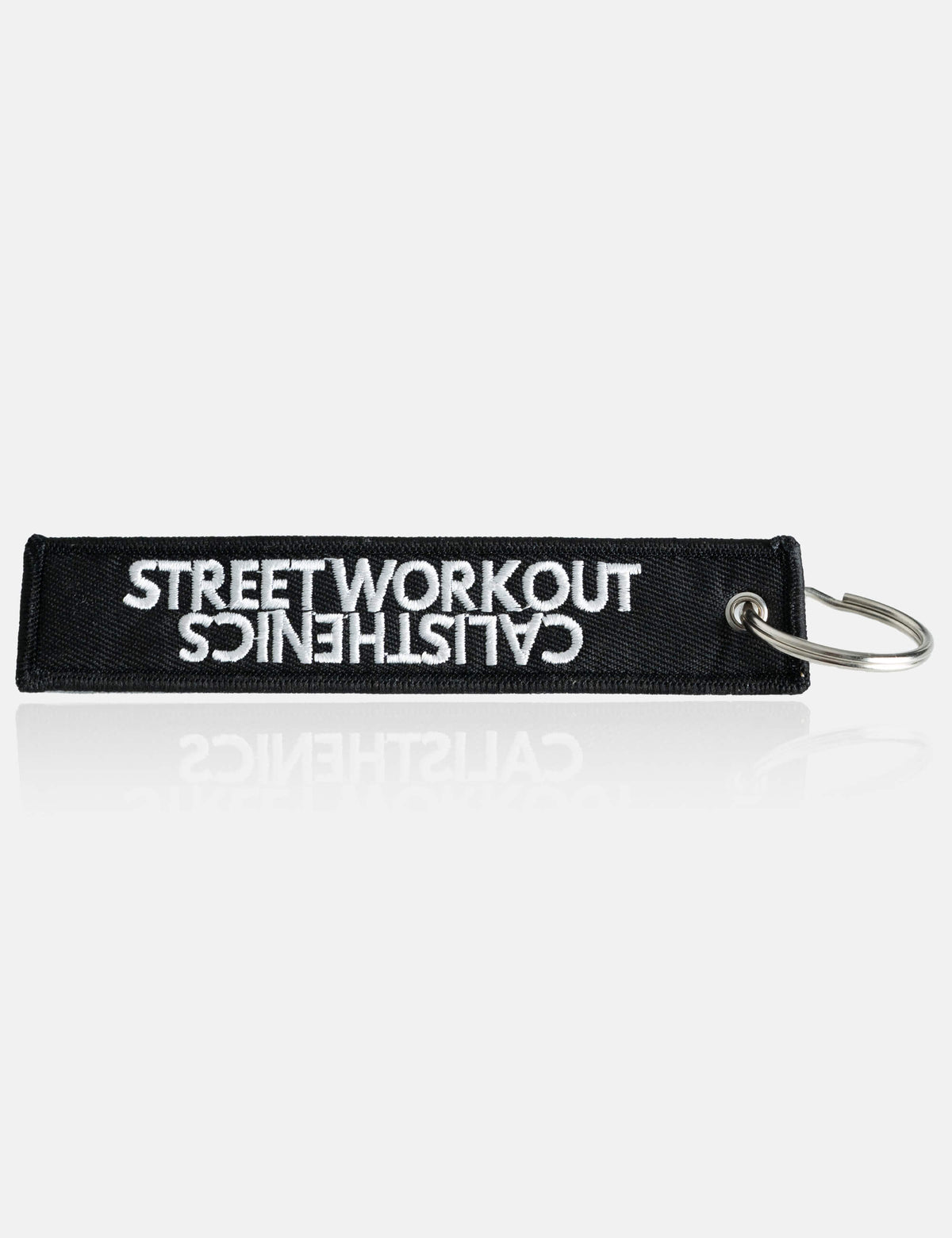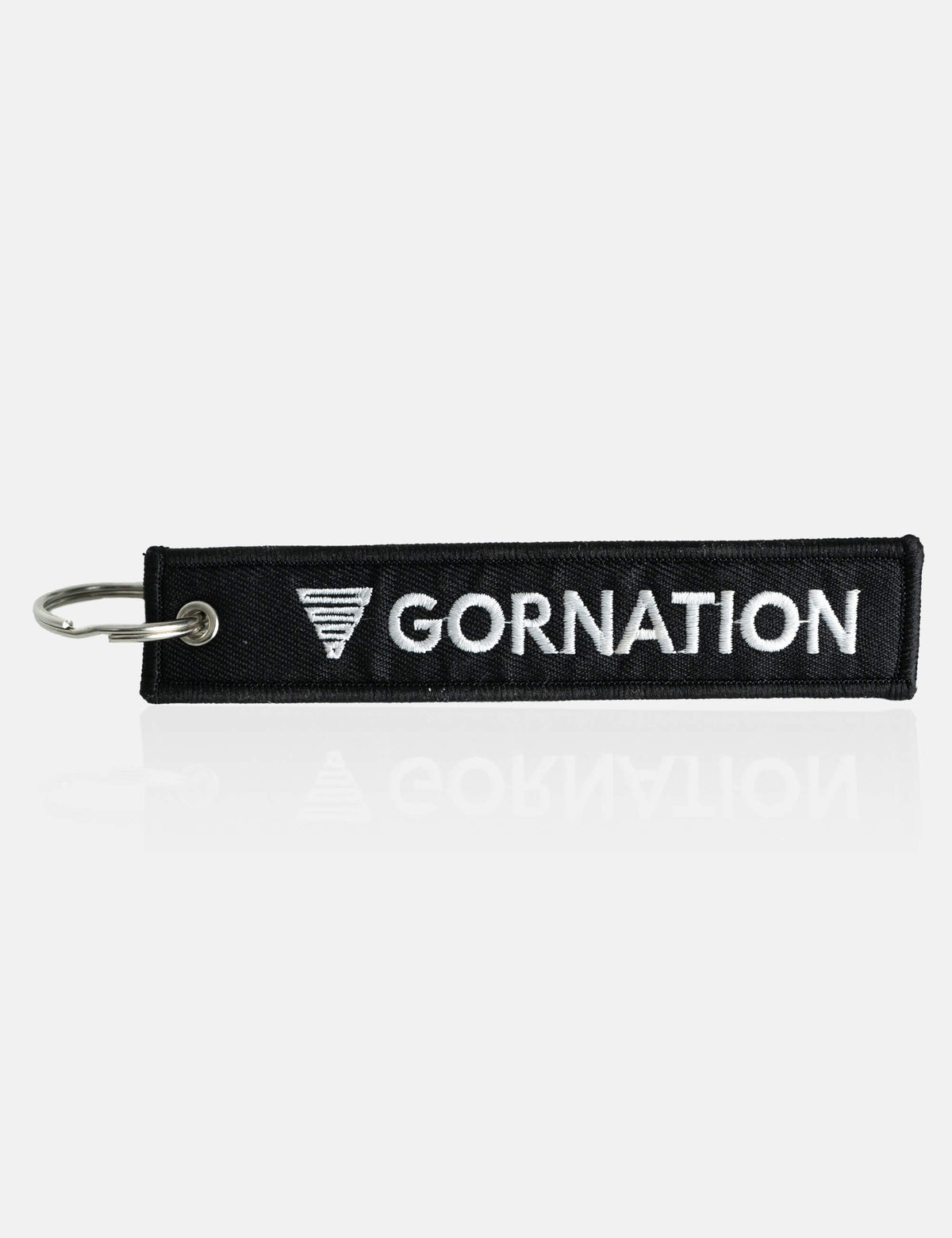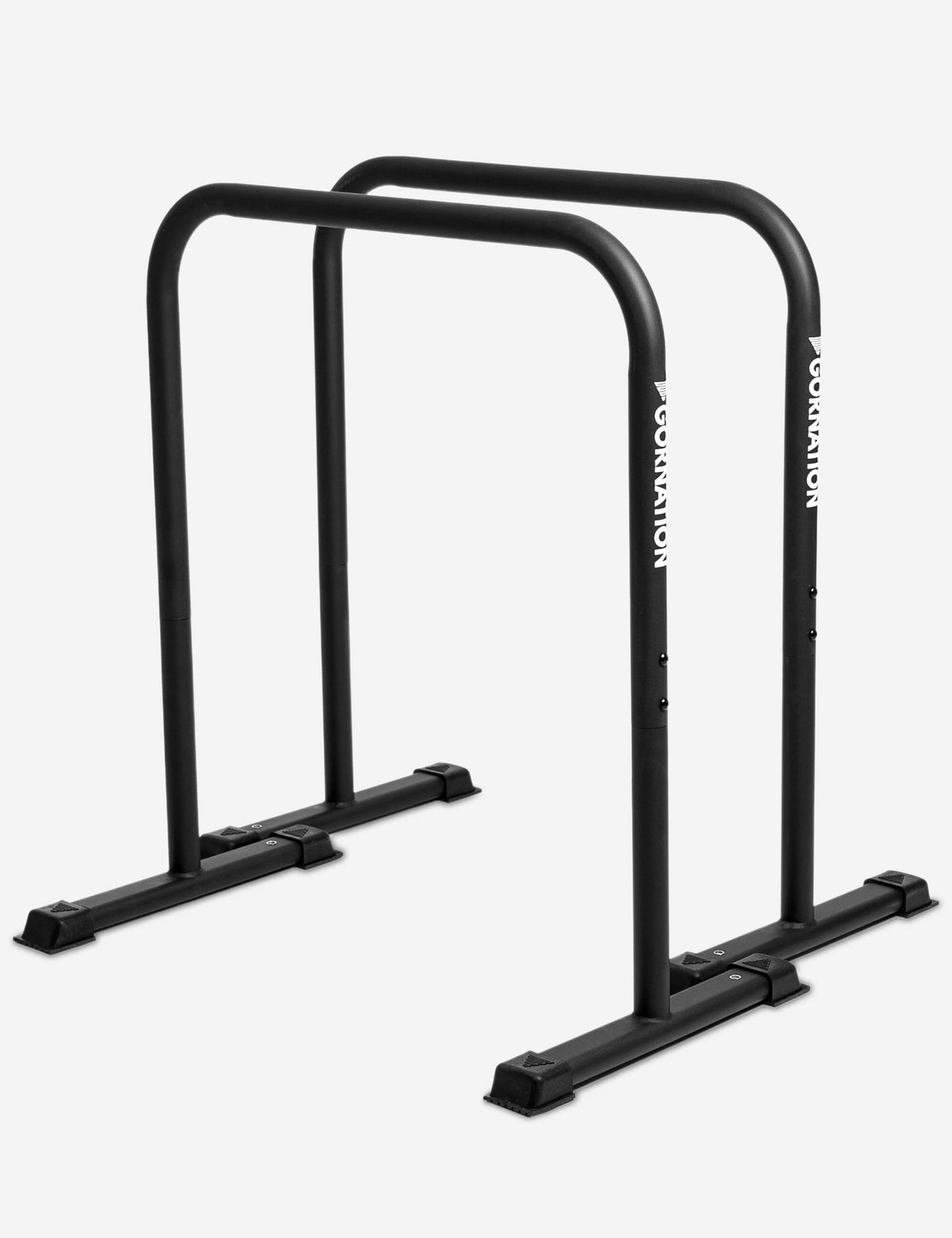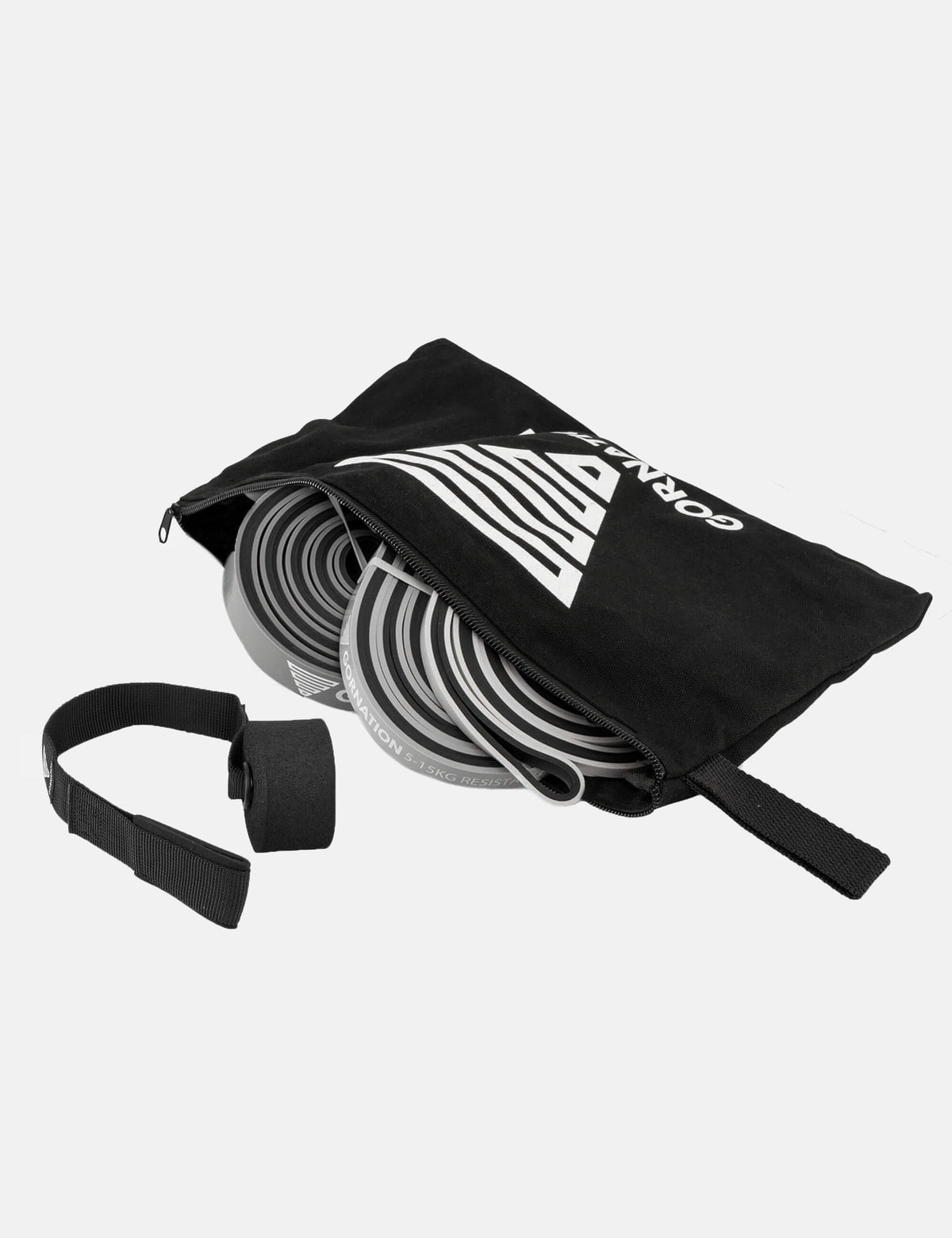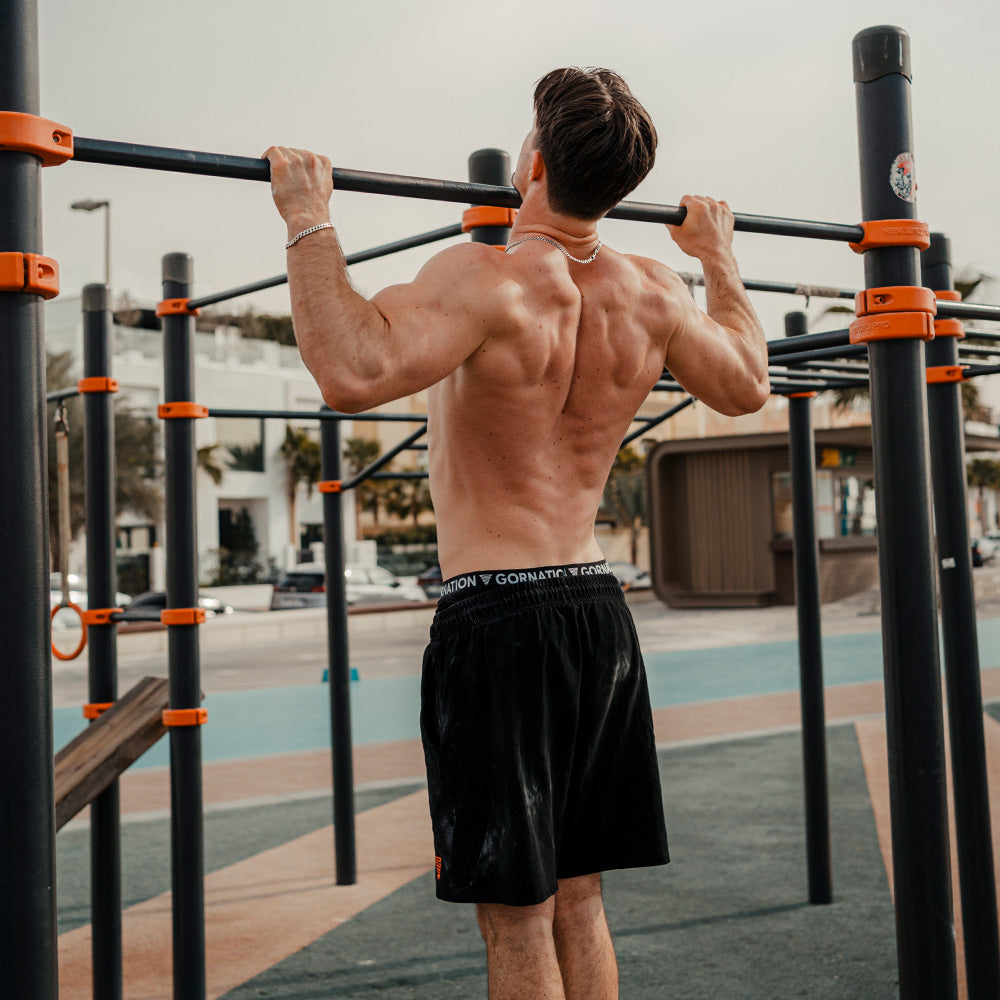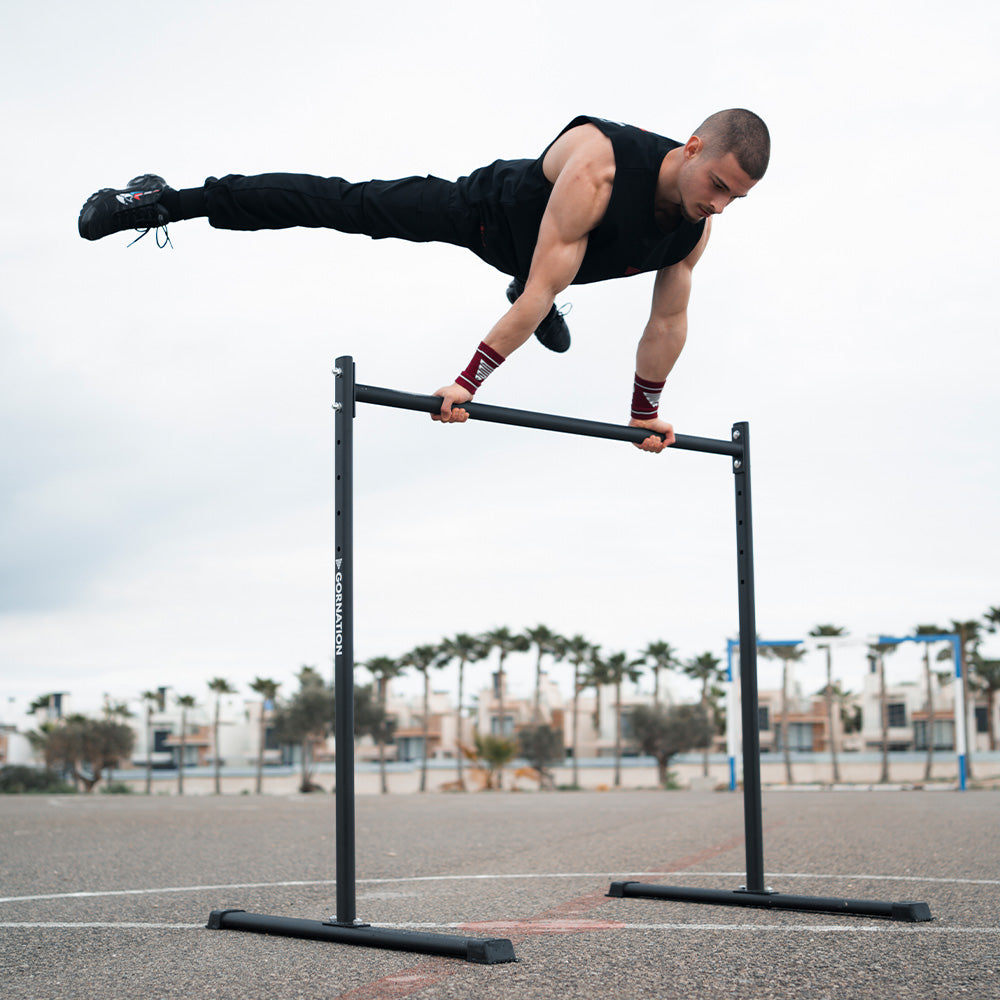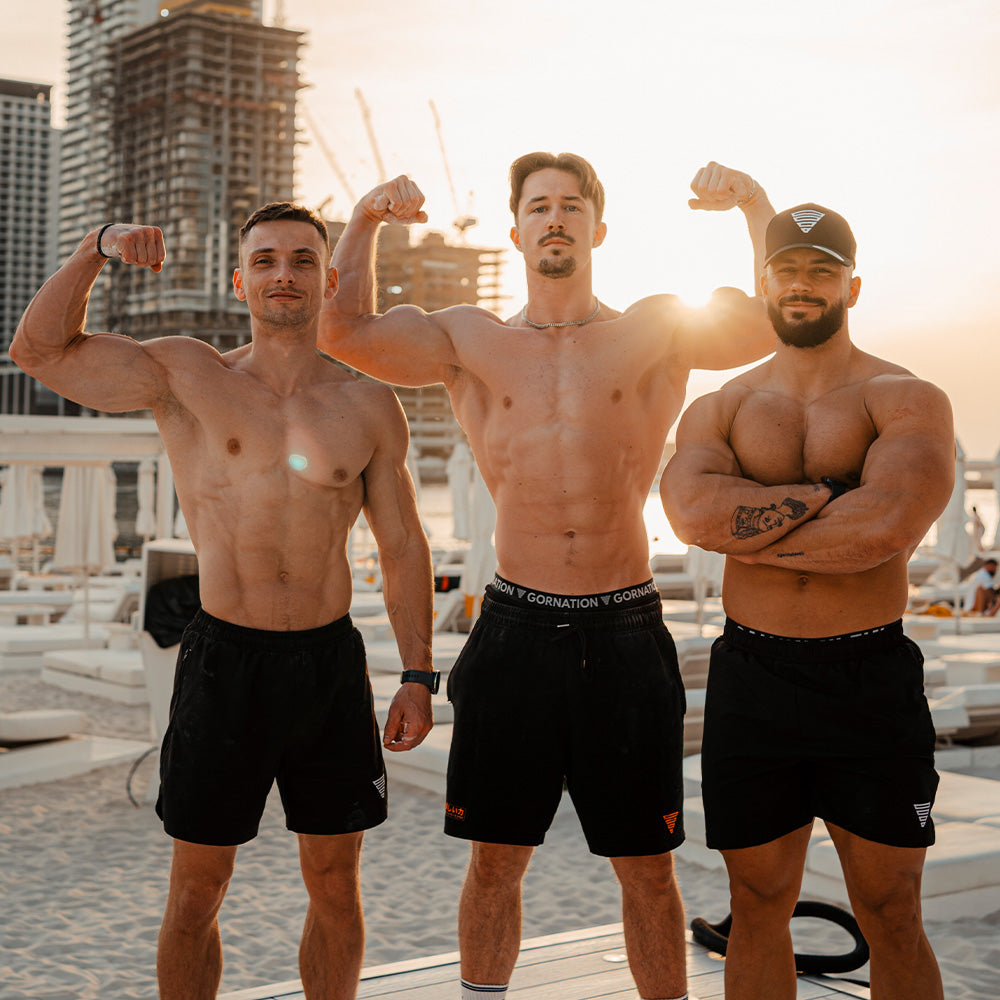The Calisthenics Cup 2025 is the top event for endurance athletes in the calisthenics world. With over 100 online applicants and only 16 male and 8 female athletes selected, this is where the best go head-to-head in intense bodyweight battles.
Each round is designed to test strength, control, and stamina. From muscle ups to push ups and squats with weight vests, athletes must perform each rep with perfect form to avoid “no reps” and move forward. This event is not just about power — it’s about precision, focus, and smart pacing.
Whether you’re here to support your favorite athlete or learn what elite-level calisthenics looks like, you’re in for a show.
Calisthenics Cup is Powered By
Barzflex
Barzflex is your go-to for high-quality outdoor fitness setups and calisthenics parks. Trusted by communities, gyms, clubs, and individuals, they bring expert design and lasting equipment to every space.
Mucki
We at mucki® don’t do things halfway. While others rely on marketing, we let the science speak. Our protein drinks hold a world-leading Chemical Score of 198 — proving unmatched quality in every bottle.
GORNATION
Built by calisthenics lovers, for calisthenics lovers. GORNATION creates top-tier gear made to level up your training and connect athletes around the world through shared passion and purpose.
Calisthenics Endurance Routine for Male Athletes
In this competition, athletes go head-to-head to see who can finish the routine the fastest with the best form. They’re allowed to rest whenever and wherever they want — except during unbroken sets, which must be completed without stopping. Since it's a 1 vs 1 battle, pacing is key. If an athlete takes too many breaks or pushes too hard too soon, they risk falling behind and losing to their opponent. Smart strategy and clean reps make the difference.
Male Round of 16 (~6m)
-
30 seconds L-sit hold on dip bars
-
30 dips + 30 pull ups + 30 push ups
-
5 muscle ups
-
20 squats with 20kg vest
-
20 dips + 20 pull ups + 20 push ups
-
5 muscle ups
-
20 squats with 20kg vest
-
30 seconds chin over the bar hold

Male Quarter-Finals (~10m)
-
10 pull ups + 10 muscle ups + 10 straight bar dips
-
15 squats with 20kg vest
-
8 pull ups + 8 muscle ups + 8 straight bar dips
-
15 squats with 20kg vest
-
6 pull ups + 6 muscle ups + 6 straight bar dips
-
15 squats with 20kg vest
-
4 pull ups + 4 muscle ups + 4 straight bar dips
-
15 squats with 20kg vest
-
2 pull ups + 2 muscle ups + 2 straight bar dips

Male Semifinals (~12m)
-
Bodyweight: 20 pull ups + 20 dips
-
10kg: 5 muscle ups + 5 straight bar dips + 5 pull ups
-
10kg: 20 pull ups + 20 dips
-
5kg: 5 muscle ups + 5 straight bar dips + 5 pull ups
-
20kg: 20 pull ups + 20 dips
-
Bodyweight: 5 muscle ups + 5 straight bar dips + 5 pull ups
-
30 deadstop push ups
-
30 squats with 20kg vest
-
5 muscle ups

Calisthenics Endurance Routine for Female Athletes
Female Quarter-Finals (~6m)
-
5 muscle ups
-
20 dips + 20 pull ups + 20 push ups
-
20 squats with 10kg vest
-
10 dips + 10 pull ups + 10 push ups
-
10 squats with 10kg vest
-
20 seconds chin over the bar hold

Female Semi-Finals (~10m)
-
5 muscle ups + 5 straight bar dips + 5 pull ups
-
20 squats with 10kg vest
-
20 seconds L-sit hold on dip bars
-
3 muscle ups + 3 straight bar dips + 3 pull ups
-
20 squats with 10kg vest
-
20 seconds L-sit hold on dip bars
-
1 muscle up + 1 straight bar dip + 1 pull up

Equipment Used in the Endurance Competition
To keep the competition fair and consistent, all athletes will use the same high-quality gear during their routines.
-
Plyo Boxes

Calisthenics Cup 2025: Competition Rules
This guide helps athletes avoid getting "no rep" calls during the event. All movements must meet the required standards to count. Judges will explain each "no rep" during the competition, so it's important to know what is expected.
Muscle Ups
Muscle ups must be clean and controlled. This is a full-body movement that transitions from a pull up into a straight bar dip.
Key Points:
-
Arms must be fully extended at the bottom and top.
-
Fast transitions without showing elbow extension won’t count.
-
No "shotgun" muscle ups (don’t push backward at the top).
-
Body should stay in a straight line—arched backs are seen as kipping.
-
Legs must stay straight and together. Slight bend = no rep.
-
No hip drive or explosive swinging.
-
A small, natural leg lift is okay under fatigue.
-
Weight plate (for weighted muscle ups) must be placed between legs or ankles.
-
False grip is not allowed. Use overhand grip only.
The arms should be completely extended at the bottom and the top of the muscle-up exercise. The extension must be clearly visible. Any “barely extended” position will be considered a no rep in the competition.
Elbow extension at the top should be taken seriously. If the athlete performs the straight bar dip part of the muscle-up too quickly, without actually reaching and showing full elbow extension, the rep will not be counted.
“Shotgun” muscle-ups are not allowed. At the top of the movement, the shoulders must be above or over the bar (e.g., don’t push back like in a “shotgun” muscle-up).
At the bottom part of the muscle-up, the body should form a straight line from hands to toes. A visibly arched back at the bottom is considered kipping, because the body should naturally go into a hollow position during the upward phase. This is an important detail that may cause the judge to call a no rep.
The pull-up to muscle-up transition should be done with a neutral body and minimal back arch, even during fast movements. Excessive body movement that helps gain speed during execution is not allowed and must be minimized.
The legs must stay extended and together throughout the entire muscle-up. Even slight, visible bending of the legs (from straight to flexed) will invalidate the repetition.
Any hip drive or movement — for example, if the body breaks its line at the hips during the movement — is also considered kipping. This includes the moment when the arms start to bend. The athlete should avoid using hip movement to gain speed or explosiveness.
The legs may rise slightly during the transition from below to above the bar, which can cause a small posterior pelvic tilt. This is allowed, as long as it’s a natural response to fatigue and not a deliberate assist from the legs to complete the movement.
For weighted muscle-ups, the weight plate can be placed anywhere from knee level and below (e.g., ankle level). The center of the weight plate should be at or below the knees. It must be positioned between the legs or ankles.
False grip is not allowed. However, overhand grip (also known as semi-false grip) is allowed.
Dips
Dips are done on parallel bars and must be deep and stable.
Key Points:
-
Shoulders must go below elbows at the bottom.
-
Arms must lock out at the top.
-
Hips should drop below the bars; no excessive hip bending.
-
Legs must be straight and still.
-
No leg kicking or swinging for momentum.
-
Weight plate (if used) must be between legs or ankles.
The shoulders must pass below the elbow level at the bottom of the dip for the rep to count. The arms must be fully extended at the top for the rep to be valid.
The hips should lower below the parallel bars (dip bars) during the downward part of the movement (eccentric phase) for the repetition to count. Excessive bending at the hips is not allowed.
The legs must stay extended and together at all times during the dip exercise. They should remain still, with no movement that could help gain speed — for example, kicking the legs back to push upward faster is not allowed.
The athlete should avoid any movements that provide extra momentum or explosiveness during the dip.
For weighted dips, the weight plate can be placed at any height from the knees and below (e.g., ankle level). The center of the weight plate must be at or below knee level. It should be placed between the legs or ankles.
Straight Bar Dips
Similar to regular dips but done on a horizontal bar.
Key Points:
-
Shoulders go below elbows at the bottom.
-
Arms must lock out at the top.
-
Legs straight and together at all times.
-
No bouncing chest off the bar.
-
No kicking legs to help you go up.
-
Weight plate must be placed between knees and ankles.
The shoulders must pass below the elbow level at the bottom of the dip for the rep to count. The arms must be fully extended at the top for the rep to be valid.
The legs must stay extended and together at all times during the dip exercise.
Bouncing the chest off the bar is not allowed. Hitting the bar with the chest at the bottom of the rep is strictly prohibited, as it gives an unfair boost on the way up.
The legs must remain still, with no movement that helps generate momentum — for example, kicking the legs back to rise faster during the straight bar dip is not allowed.
The athlete should avoid any movements that help gain speed or explosiveness during the straight bar dip.
For weighted straight bar dips, the weight plate can be placed at any height from the knees and below (e.g., ankle level). The center of the weight plate must be at or below knee level. It should be placed between the legs or ankles.
Pull Ups
Each pull up must show full range from dead hang to chin-over-bar.
Key Points:
-
Grip too wide is not allowed. Max width marked with tape.
-
Chin must go clearly above the bar. No "almost" reps.
-
Elbows must fully extend at the bottom.
-
Dead hang is required before each rep.
-
Shoulders must visibly extend at the bottom.
-
Legs straight and still. Bending or kipping = no rep.
-
Lower back arch is okay if it’s not helping the movement.
-
Weight plate (if used) goes between knees or ankles.
A grip that significantly reduces the range of motion due to excessive width is not allowed (e.g., going too wide). The maximum allowed grip width will be marked with tape on the bar.
Both “thumbs over the bar” and “thumbs under the bar” grips are allowed during pull-ups.
The chin must clearly pass and rise above the bar level at the top of the pull-up for the rep to count. It’s not enough for the chin to be just slightly higher than the bar — it must be visibly above it. There are no “in-betweens.” A chin that’s at the same level as the bar or just barely above it does not count as a valid rep.
At the bottom of the movement, the athlete must reach full elbow extension. This extension should be clearly visible, without needing to slow down a video to confirm it. The athlete should be aware of how speed affects range of motion and adjust accordingly.
Each pull-up must finish with a full dead hang — meaning the athlete must go all the way down before beginning the next rep. Jumping off the bar after reaching chin-over-bar height without completing the dead hang does not count.
There must be visible shoulder extension at the bottom of each rep during the arm lockout phase. If the athlete excessively leans back or retracts the shoulder blades (scapular retraction), the judge will communicate this and ask for a form correction.
The legs may rise slightly during the pull-up due to a minor posterior pelvic tilt — this is allowed if it happens naturally under fatigue and doesn’t assist the movement. However, the legs must remain extended and together at all times. Any visible flexion (bending) of the legs cancels the rep.
The legs must stay still throughout the exercise. Movements like kipping from the hips to help pull upward are not allowed.
A slight arch in the lower back is acceptable, as long as it’s not part of a kipping motion that comes from the hips.
The athlete must avoid any movement that gives extra momentum or explosiveness during the pull-up.
For weighted pull-ups, the weight plate may be placed anywhere from knee level and below (e.g., at the ankles). The center of the weight plate must be at or below knee height and positioned between the legs or ankles.
Push Ups (on Parallettes)
Push ups will be done on low parallettes. Keep your body straight throughout.
Key Points:
-
Shoulders must go below elbows.
-
Arms must fully extend at the top.
-
Keep your back flat. No sagging or arching.
-
No hip movement or bouncing.
-
Legs must be straight and together.
-
Deadstop or slow reps are better than rushed reps.
Straight parallettes will be used in the competition as an alternative to the straight or single low bar push-up. The push-ups will be performed on GORNATION Premium Parallettes Pro.
The body must remain in a neutral, straight position throughout the entire push-up. The maximum allowed grip width will be marked with tape on the bars.
The shoulders must pass below the elbow level on the way down for the rep to count. The arms must be fully extended at the top to complete the rep. The elbow extension must be clearly visible — no need to slow down a video to confirm it.
Athletes should be mindful of how speed affects range of motion. Going too fast can reduce the quality of the movement, so pacing is important.
Hip movement during the push-up is not allowed. The body should maintain a neutral or slightly hollow position the entire time. Excessive arching in the lower back is not allowed.
If the judge sees a visible change in lower back or hip position, they may ask the athlete to pause and reset before continuing. Hip position is a key factor and may result in a no rep if not maintained correctly.
To avoid wasted energy and missed reps, athletes are encouraged not to rush through the push-ups. Under fatigue (or "pump"), it’s harder to feel whether full elbow extension has been reached. Performing dead-stop or semi dead-stop reps can help make sure each one counts.
The legs must stay extended and together at all times during the push-up. Even slight, visible bending of the legs will invalidate the rep.
Any movement that helps generate speed or momentum — such as bouncing or explosive push-offs — is not allowed. Athletes should avoid using techniques that give extra propulsion during the push-up.
Weighted Vest Squats
Squats are done with a strapped weight vest.
Key Points:
-
Weight Vest must be strapped tight—no swinging.
-
Hips must drop below knees at the bottom.
-
Hips must fully extend at the top.
-
Feet should be at or just wider than shoulder width.
Weighted vest squats must be performed with the vest securely strapped. If the vest swings during the movement, the rep will not be counted. The athlete is responsible for properly strapping the vest before beginning the exercise.
For both weighted vest and goblet squats, the hips must pass below knee level at the bottom of the squat for the rep to count.
At the top of the squat, the hips must be fully extended — meaning the body is straight and upright. Without full hip extension at the top, the rep is not valid.
The feet should be positioned at shoulder width or slightly wider.
L-Sit Hold & Chin Over Bar Hold
These static holds test body control and form.
L-Sit Hold:
-
Arms and legs must be fully straight.
-
Heels must stay above dip bars.
-
Legs must stay together.
-
If form breaks (legs drop or bend), the set restarts.
The L-sit hold must be performed with both arms and legs fully extended. The athlete’s heels must stay above the top of the dip bars for the hold to be valid.
L-sit holds in the routine must be performed unbroken — meaning without dropping out of position. It's important to rest enough beforehand to avoid losing the hold due to fatigue.
If the athlete breaks the hold at any point, the set must be restarted from the beginning.
The legs must remain together and fully extended throughout the hold. Bending the legs counts as a break and ends the set.
If the heels drop and the L-sit position is lost (i.e., legs fall below the top of the dip bars), the set is also considered broken and must be restarted.
Both dorsiflexion (toes pointing toward you) and plantar flexion (toes pointing away) of the feet are acceptable.
Chin Over Bar Hold:
-
Chin must stay clearly above and over the bar.
-
Chin resting on the bar = instant fail.
-
Legs must stay straight and together.
-
Dropping chin below the bar = restart the set.
The chin-over-bar hold must be performed with your chin clearly positioned above and across the pull-up bar. The position should be obvious and unquestionable — the chin must not be hovering at bar level but clearly over it.
Resting or planting the chin on the bar immediately ends the set. This counts as a break with no warning.
The legs must remain together and fully extended throughout the hold. Any visible bending or flexing of the legs counts as a break of the set.
If the initial position is lost — for example, if the head or chin drops below the bar — the set is considered broken and must be restarted from the beginning.

Rules Conclusion
Judges’ assistants will help athletes keep track of their routines during the competition.
If you have any mobility restrictions (for example, if one arm can fully extend at the elbow and the other cannot), you must inform the judges before the competition starts. Failing to do so may cause confusion and lead to discussions during your performance, which can waste valuable time. Make sure any such issues are clearly communicated in advance.
A “No Rep” will be called out by the judge with a clear shout of “No Rep!” followed by a brief explanation of the reason (for example: “No Rep! Lock out the elbows!” or “No Rep! Go lower!”).
Every “No Rep” is wasted energy. Keep in mind that these routines are more like mini-marathons than short sprints, so it’s important to treat them accordingly and plan your strategy carefully.
Listen to the judges during your performance. You might lose valid reps simply because you’re not paying attention to whether the judge is counting your repetitions or signaling a mistake.
It is in your best interest to maintain the best possible form throughout the routine. Clean form helps you avoid missed reps and saves energy.
If you have any doubts or questions, feel free to contact Saibov.
Athletes Competing at Calisthenics Cup
The athletes competing in the Calisthenics Cup are among the best in the world. Each one has earned their spot by proving they can perform at the highest level of endurance calisthenics. This competition pushes their physical and mental limits with routines that demand strength, control, and flawless form. They face off 1 vs 1, racing through intense workouts where every rep must be perfect to count. Rest is allowed, but smart pacing is key — one mistake can mean losing to your opponent. This is where the top athletes come to test their limits and fight for the win.
Male Endurance Athletes:
Female Athletes:
 Calisthenics Endurance Competition Prize Money
Calisthenics Endurance Competition Prize Money
We value the dedication and performance of all athletes competing in the Calisthenics Cup 2025. Each category's prize money is calculated based on the number of competitors, ensuring fairness and recognition for their efforts. For each participant, €175 is added to the prize pool, rewarding those who strive for excellence in calisthenics.
Men’s Endurance Prize Money
-
1st place: €1,600
-
2nd place: €800
-
3rd place: €400
(Total: €2,800)
Women’s Endurance Prize Money
-
1st place: €800
-
2nd place: €400
-
3rd place: €200
(Total: €1,400)
This Competition Is Hosted By
This event is made possible thanks to our sponsors, volunteers, judges, and the amazing calisthenics community showing up to compete and support.
The mastermind behind the endurance routines and athlete selection is Ruslan Saibov, who ensures the workouts are world-class and the matchups are fair and competitive.
The face of the event — coordinating athletes, managing logistics, and keeping everything on track — is Daniel Flefil.
Special thanks to our sponsors:
Barzflex, Mucki, and GORNATION for supporting this event and helping bring the Calisthenics Cup 2025 to life.
👉 Want to learn more about the Calisthenics Cup? Get all the details about the event here.
 | 3.500+ Reviews
| 3.500+ Reviews Free EU Shipping above 100€*
Free EU Shipping above 100€* 200.000+ Customers Worldwide
200.000+ Customers Worldwide Worldwide Tracked Shipping
Worldwide Tracked Shipping


